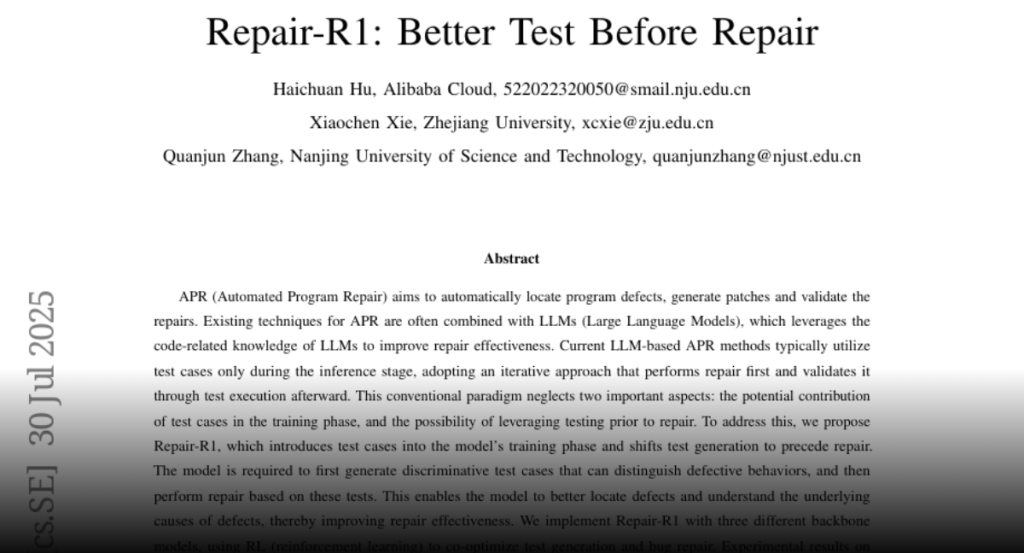APR (Automated Program Repair) aims to automatically locate program defects, generate patches and validate the repairs. Existing techniques for APR are often combined with LLMs (Large Language Models), which leverages the code-related knowledge of LLMs to improve repair effectiveness. Current LLM-based APR methods typically utilize test cases only during the inference stage, adopting an iterative approach that performs repair first and validates it through test execution afterward. This conventional paradigm neglects two important aspects: the potential contribution of test cases in the training phase, and the possibility of leveraging testing prior to repair. To address this, we propose Repair-R1, which introduces test cases into the model’s training phase and shifts test generation to precede repair. The model is required to first generate discriminative test cases that can distinguish defective behaviors, and then perform repair based on these tests. This enables the model to better locate defects and understand the underlying causes of defects, thereby improving repair effectiveness. We implement Repair-R1 with three different backbone models, using RL (reinforcement learning) to co-optimize test generation and bug repair. Experimental results on four widely adopted benchmarks demonstrate the superiority of Repair-R1. Specially, compared to vanilla models, Repair-R1 improves repair success rate by 2.68% to 48.29%, test generation success rate by 16.38% to 53.28%, and test coverage by 0.78% to 53.96%.

